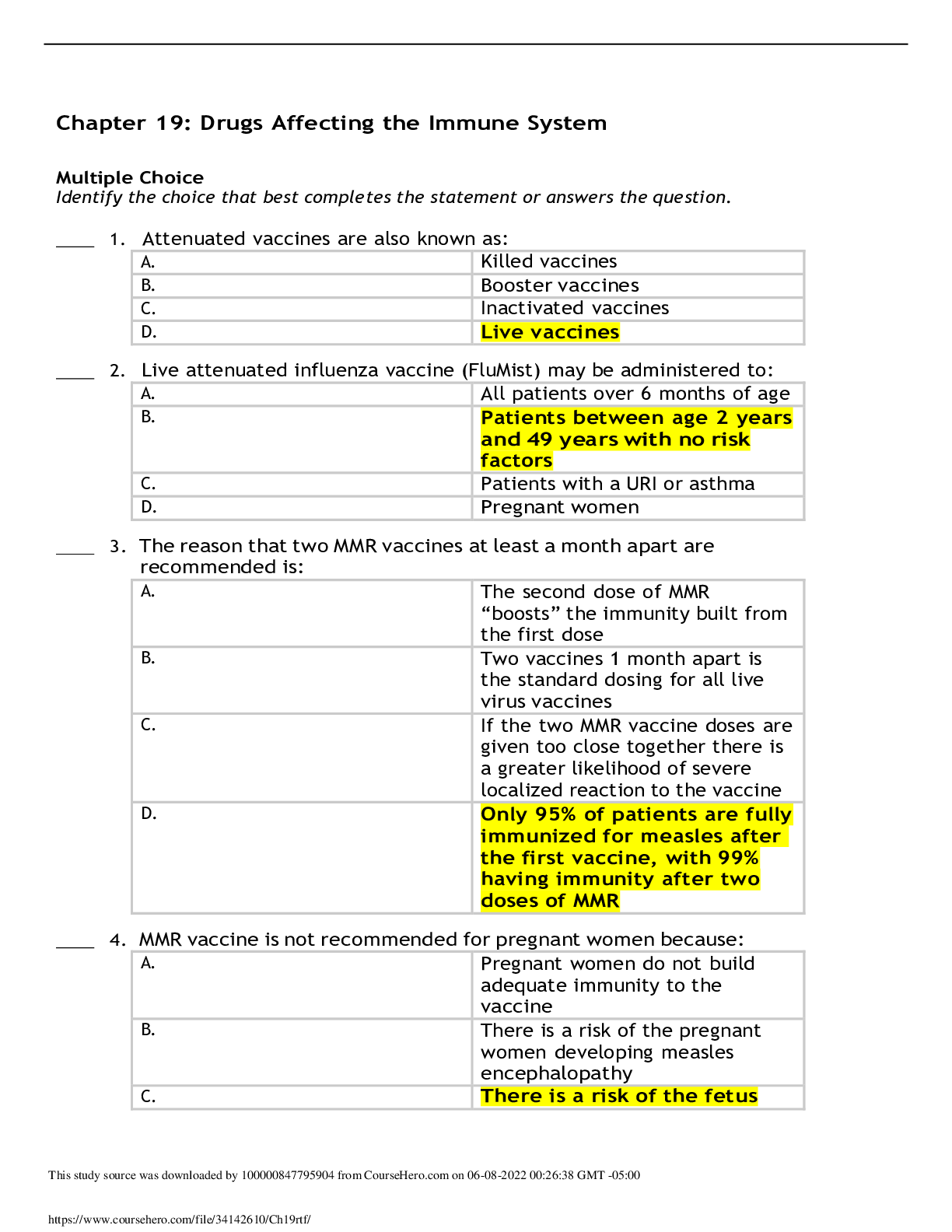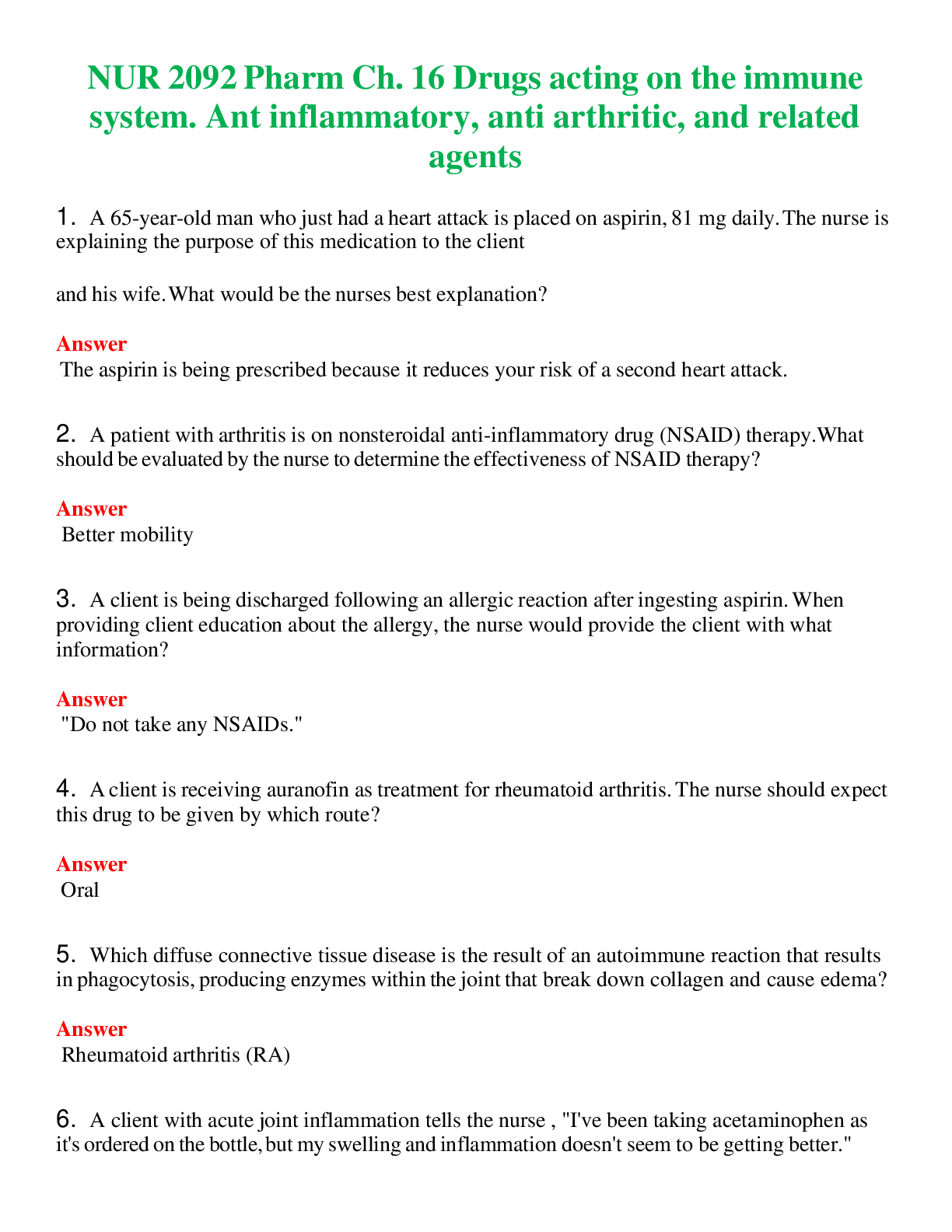Chapter 21: The Immune System
Document Content and Description Below
Immunocompetence Correct Ans:- is the ability of individual cells to recognize a specific antigen by binding to it Which of these mechanisms do cytotoxic T (TC) cells use to destroy a t... arget--that is, to deliver a lethal hit? Correct Ans:- perforation of the membrane Health workers working with diphtheria commonly receive a serum with antibodies against the pathogen. What type of immunity would this be? Correct Ans:- passive, artificial immunity Binding of an eosinophil to an antibody-coated parasitic worm involves binding of the antibody's stem region to a(n) Correct Ans:- plasma membrane protein on the eosinophil's surface What is the role of interferon in defense against disease? Correct Ans:- protects cells that have not yet been infected by viruses Which type of chemical induces fever? Correct Ans:- pyrogens Which of the following activate CD8 cells? Correct Ans:- antigen fragments on class I MHC proteins Which of the following is activated by the binding of proteins to sugars on the surface of microorganisms? Correct Ans:- lectin pathway Which of the following statements is a false or incorrect statement? Correct Ans:- After becoming immunocompetent, the naive T cells and B cells are exported to the bone marrow where the encounters with antigens occur. Which of the following best illustrates artificially acquired active humoral immunity? Correct Ans:- vaccines Your clinical instructor wants a brief description of the four cardinal signs of inflammation. What would you tell him? Correct Ans:- The heat and redness are caused by increased blood flow to the infected areas, and the pain and swelling are caused by excessive leakage of fluid from the capillaries into the infected area. Membrane attack complex (MAC) kills by Correct Ans:- disrupting the selective permeability of a bacteria's plasma membrane A flu vaccine is needed seasonally to be effective but a polio vaccine is only needed once. The best explanation of this is Correct Ans:- the flu has several strains that change seasonally The redness and heat of an inflamed area are due to a local hyperemia caused by Correct Ans:- vasodilation T cells achieve self-tolerance in the Correct Ans:- thymus During inflammation, fluids will passively diffuse out of blood vessels into the nearby infected tissues. This implies all of the following EXCEPT Correct Ans:- B-lymphocytes will differentiate to become plasma cells What is/are the specific target(s) of interferons? Correct Ans:- the membrane receptors on healthy cells Which of the following is characteristic of complete antigens? Correct Ans:- reactivity with an antibody What characterizes the chemotaxis phase of phagocyte mobilization? Correct Ans:- Neutrophils and other WBCs migrate up the gradient of chemotactic agents to the site of injury. Proliferation of lymphocytes occurs immediately after which of these events? Correct Ans:- activation Why are children given vaccinations? Correct Ans:- to develop antibodies against various diseases Which class of tissue graft is the LEAST likely to be accepted by a patient's body? Correct Ans:- xenograft Which of the areas seen the figure must be occupied by T lymphocytes, at least for a while, but is NOT required for the production of B lymphocytes? Correct Ans:- the thymus Which of the following is associated with passive immunity? Correct Ans:- passage of IgG antibodies from a pregnant mother to her fetus What distinguishes the innate defense system from the adaptive defense system? Correct Ans:- The innate defense system is always ready to respond immediately, whereas it takes considerable time to mount the adaptive defense system. The innate defenses consist of surface barriers and internal defenses, whereas the adaptive defenses consist of humoral and cellular immunity, which rely on B and T Lymphocytes What is the first line of defense against disease? Correct Ans:- surface barriers (skin and mucous membranes) What is opsonization and how does it help phagocytes? Give an example of a molecule that acts as an opsonin. Correct Ans:- Opsonization is the process of making pathogens more susceptible to phagocytosis by decorating their surface with molecules that phagocytes can bind. Antibodies and complement proteins are examples of molecules that act as opsonins Under what circumstances might NK cells kill our own cells? Correct Ans:- Our own cells are killed by NK cells when they have been infected by viruses or when they have become cancerous What are the cardinal signs of inflammation and what causes them? Correct Ans:- Redness, heat, swelling, and pain are the cardinal signs of inflammation. Redness and local heat are both caused by vasodilation of arterioles, which increases the flow of blood [Show More]
Last updated: 2 years ago
Preview 1 out of 9 pages
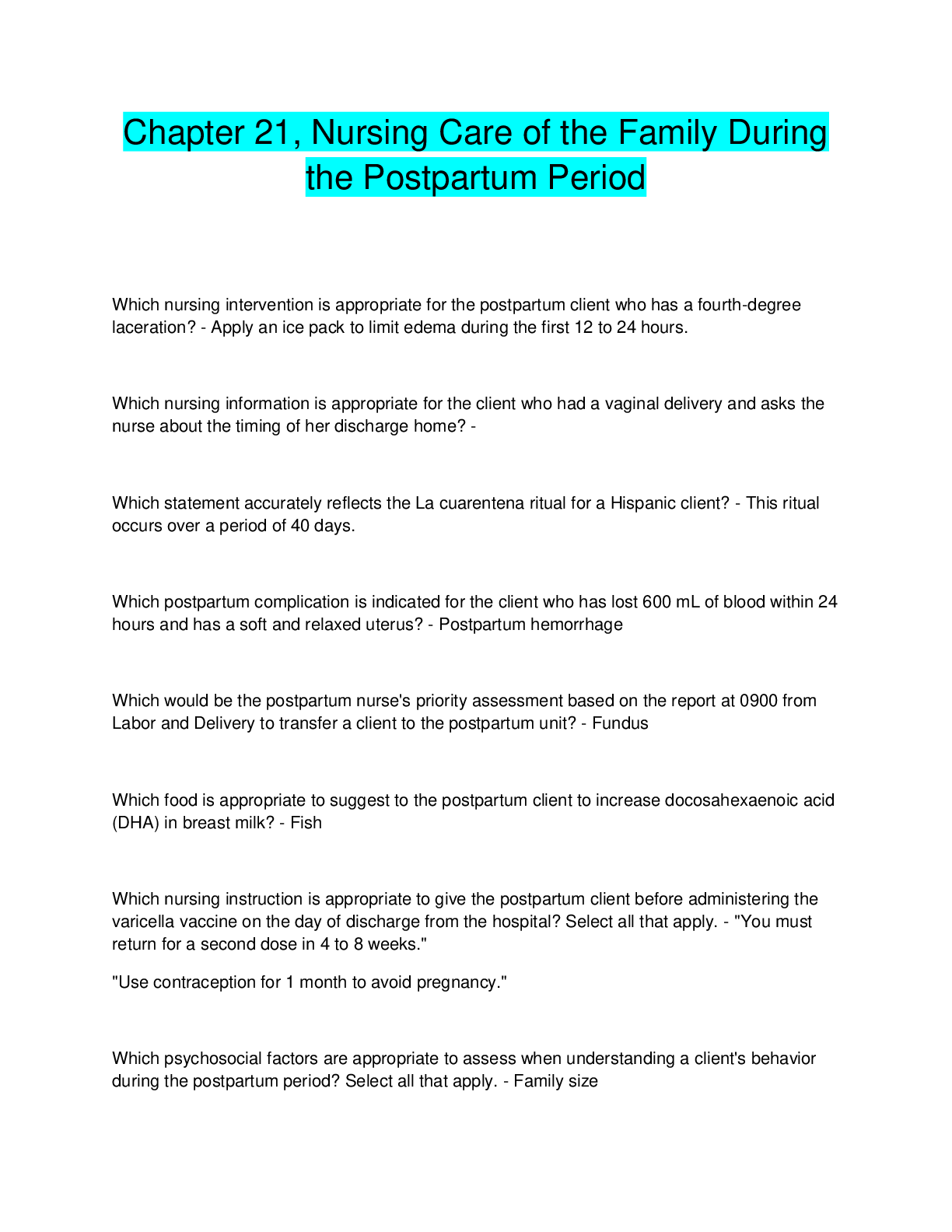
Buy this document to get the full access instantly
Instant Download Access after purchase
Buy NowInstant download
We Accept:

Reviews( 0 )
$12.00
Can't find what you want? Try our AI powered Search
Document information
Connected school, study & course
About the document
Uploaded On
Jun 02, 2022
Number of pages
9
Written in
Additional information
This document has been written for:
Uploaded
Jun 02, 2022
Downloads
0
Views
64


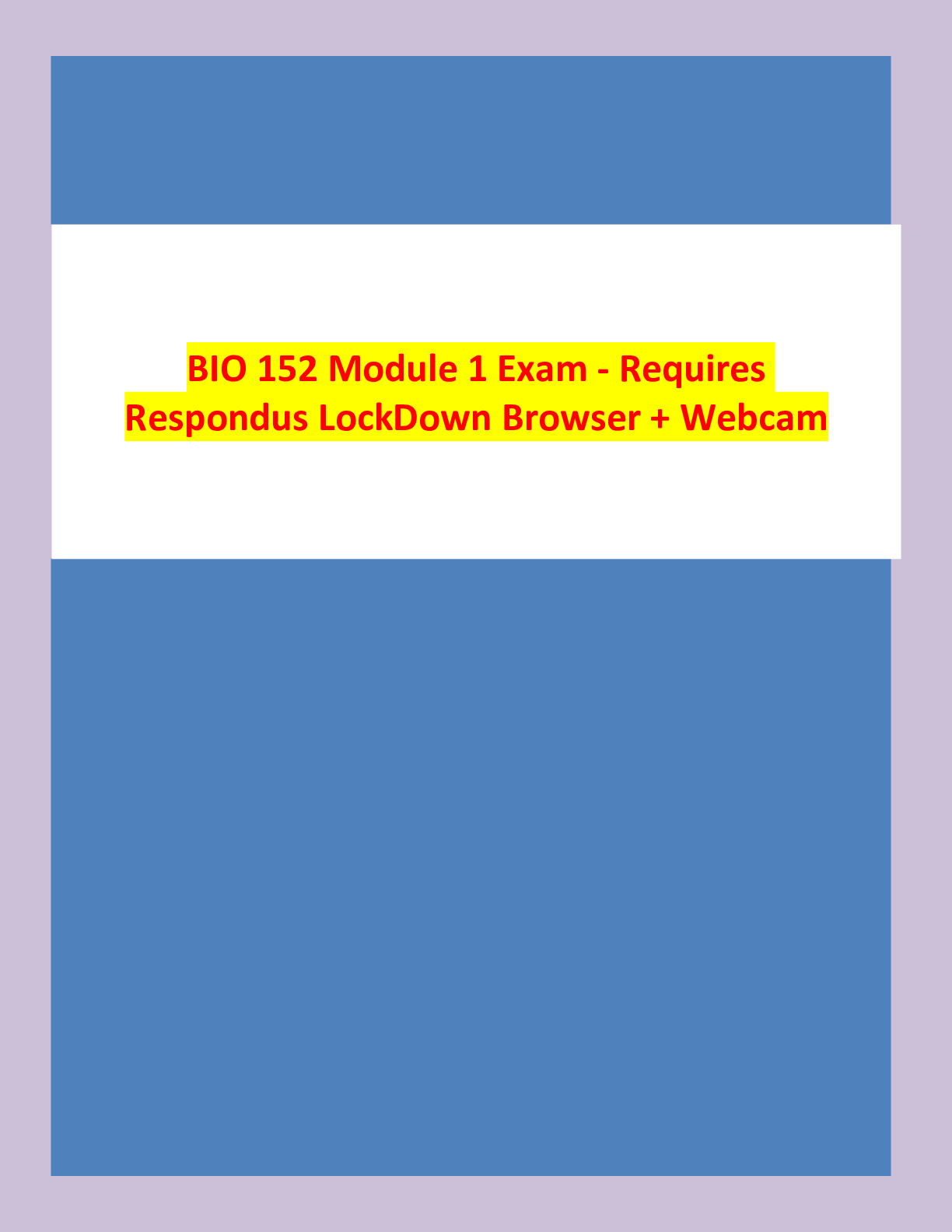






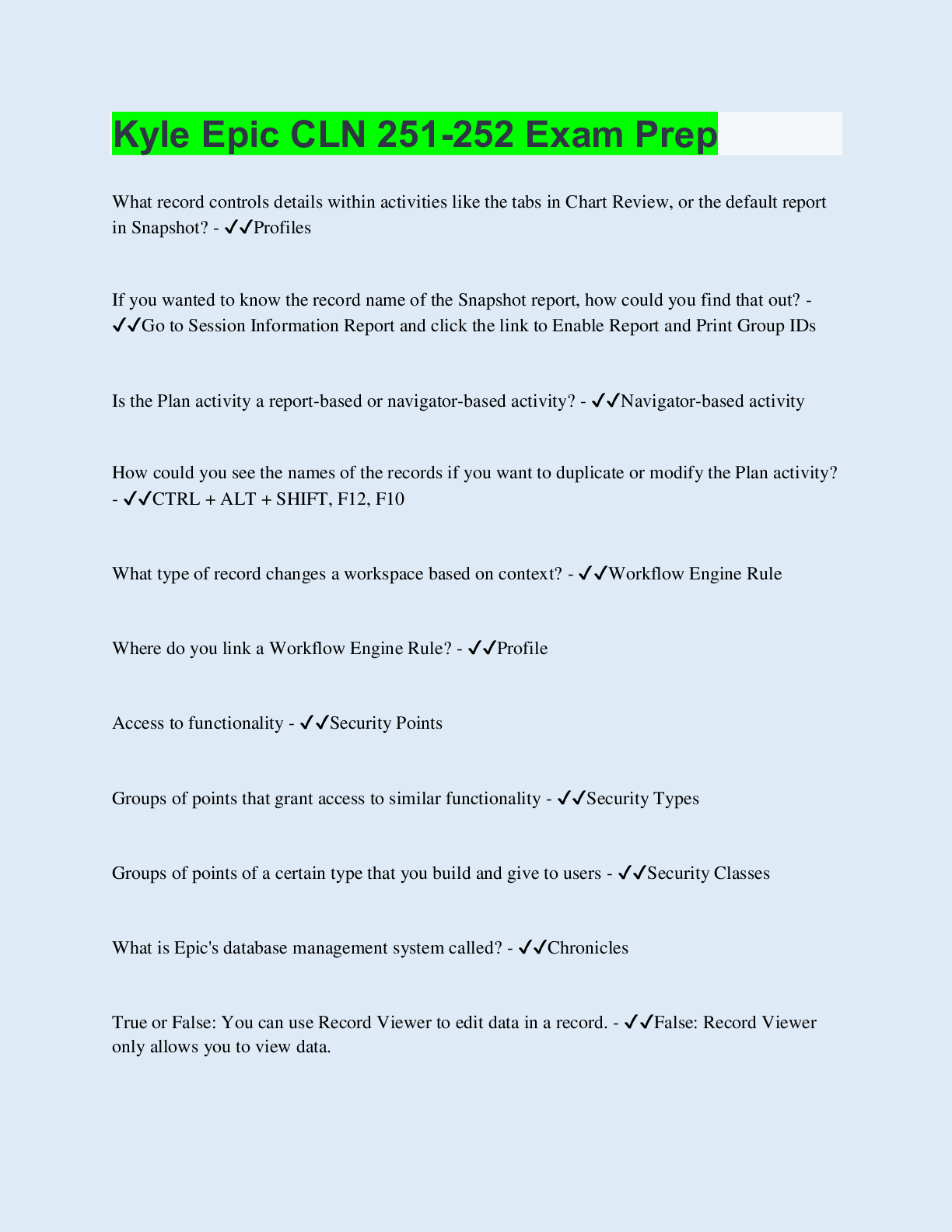





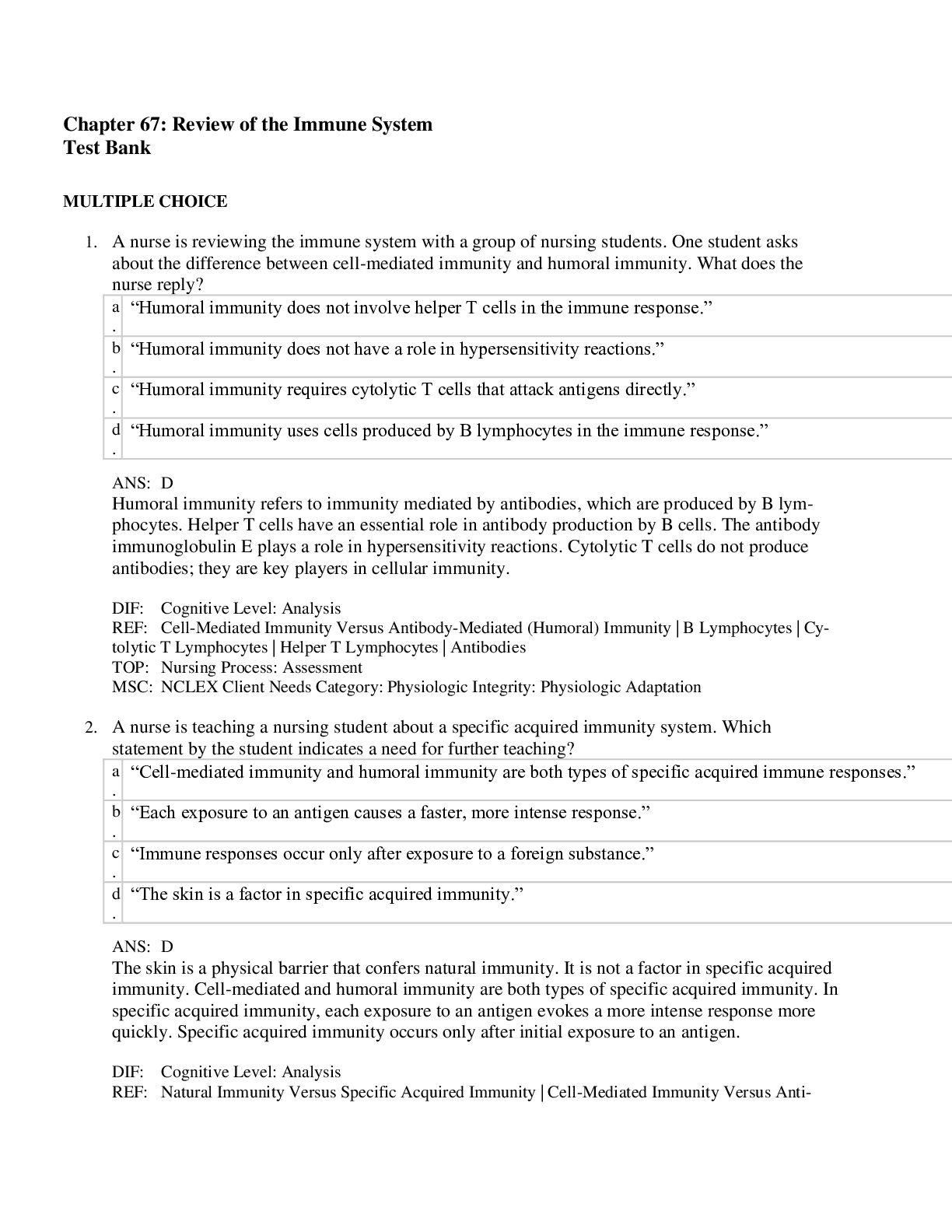
.png)
.png)

